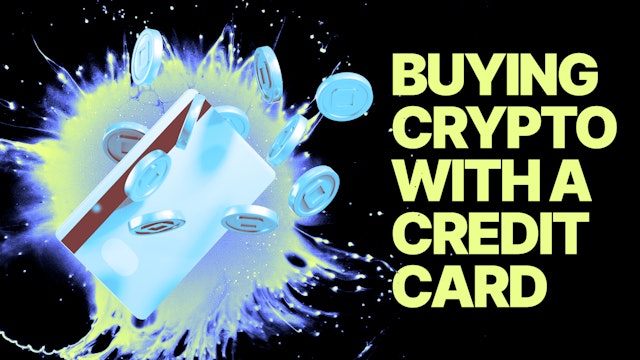The Crypto Ecosystem: A Guide to Different Types of Cryptocurrency
From stablecoins to utility tokens, here is how to tell the difference between the thousands of digital assets on the market.
In this article...
- Cryptocurrencies are generally divided into coins (native to a blockchain) and tokens (built on top of existing blockchains).
- Different assets serve specific purposes, ranging from store of value and governance rights to digital art and memes.
- Understanding these categories helps you tell the difference between useful projects and highly speculative assets.

In 2009, the crypto market had exactly one asset: Bitcoin.
Today, there are tens of thousands of digital assets trading on exchanges worldwide. If you are new to crypto, a price ticker can look like alphabet soup, with symbols and prices that feel impossible to decode.
Even though we group them all under the word "crypto," these assets often do very different things. Some are built to function like digital money. Others act more like software shares or in-game currencies. Some exist mainly as jokes.
To navigate this market, you need to know what you are actually looking at. This guide walks through the main types and categories of cryptocurrency so you can read that ticker with more confidence.
The Fundamental Distinction: Coins vs. Tokens
The key technical split in crypto is between a coin and a token. People often use these terms as if they mean the same thing, but they do not.
Coins (Native Assets)
A coin is the native currency of its own independent blockchain. It is the basic fuel that keeps that network running.
- How it works: Coins are used to pay transaction fees and to reward the miners or validators who secure the network.
- Examples: Bitcoin (BTC) runs on the Bitcoin blockchain. Ethereum (ETH) runs on the Ethereum blockchain.
- Analogy: Think of a coin like the currency of a specific country. If you are in the United States, you use US dollars to pay for goods and services. If you are on the Bitcoin network, you use bitcoin to pay for transactions.
Tokens (Guest Assets)
Tokens do not have their own blockchain. They are built on top of an existing blockchain, often Ethereum, and they rely on that network’s security and infrastructure.
- How it works: Creating a token is much easier than launching a coin, because the developer does not need to build and maintain a new blockchain. When you send a token, you generally pay the transaction fee in the network’s native coin. For example, sending an Ethereum-based token requires ETH for gas fees.
- Examples: Uniswap (UNI) and Shiba Inu (SHIB) are tokens that exist on the Ethereum blockchain.
- Analogy: Think of the blockchain as the Apple App Store or Google Play. The native coin is the operating system running underneath. Tokens are the individual apps that run on that system.
Categorizing Crypto by Use Case
Once you understand coins vs. tokens, the next step is to look at what each asset is supposed to do. Use case is often more important than technical design.
1. Payment and Store of Value
These assets are the closest digital equivalents to money or gold. Their main jobs are to be used in payments or to hold value over time.
- Bitcoin (BTC): Often called "digital gold," Bitcoin is the original cryptocurrency. It was designed as a decentralized alternative to government-issued money, with a limited supply and no central authority.
2. Infrastructure (Smart Contract Chains)
These are blockchains built to host other applications. You can think of them as general-purpose platforms for crypto software.
- Ethereum (ETH) and Solana (SOL): These networks support smart contracts, which are pieces of code that run automatically when certain conditions are met. Smart contracts power decentralized applications (dApps), such as decentralized exchanges and lending protocols. The value of these coins often tracks how much activity and development takes place on their networks.
3. Stablecoins
Stablecoins are cryptocurrencies designed to keep their price relatively steady. Most are linked 1:1 to a real-world asset, usually the US dollar.
- USDC and Tether (USDT): These tokens let traders and investors hold funds on the blockchain while avoiding the large price swings of assets like BTC or ETH. Stablecoins are fungible, so one USDC is intended to be worth the same as any other USDC and to closely track $1.
4. Utility and Governance Tokens
These tokens have specific roles inside a particular application or protocol. They often live on smart contract platforms such as Ethereum.
- Utility: These tokens provide access to a product or service. In the metaverse game The Sandbox, the SAND token is used to buy virtual land and in-game items. In that world, SAND is the main currency.
- Governance: These tokens grant voting rights. Holders of Uniswap’s UNI token can vote on changes to the Uniswap protocol, much like shareholders voting on company decisions. Governance tokens can influence fee structures, upgrades, and how funds are used inside the protocol.
5. Memecoins
Memecoins are cryptocurrencies built around internet memes, jokes, or pop culture references. Their brand is often stronger than their technology.
- Dogecoin (DOGE) and Shiba Inu (SHIB): These projects usually start with little or no built-in utility. Their price often depends on community hype, social media buzz, and celebrity attention. Some memecoins later add features or ecosystems, but in general they are highly speculative and extremely volatile. Prices can spike fast and drop even faster.
6. Central Bank Digital Currencies (CBDCs)
A Central Bank Digital Currency is a digital form of a country’s national currency, issued and controlled by that country’s central bank.
Unlike Bitcoin, CBDCs are centralized. The central bank can track balances, approve or reject transactions, and control supply.
Supporters say CBDCs can make payments faster and cheaper. Critics point to serious privacy concerns, since they can allow governments to monitor transactions in granular detail and potentially restrict how money is used.
Fungible vs. Non-Fungible Tokens (NFTs)
You will often hear the word "fungible" when people compare different types of crypto assets. It means that individual units are interchangeable.
- Fungible Tokens: Bitcoin, ETH, and USDC are fungible. If you swap one bitcoin for another, you have the same amount of value. The same idea applies to dollar bills. One $10 bill spends the same as any other $10 bill, even if the serial numbers are different.
- Non-Fungible Tokens (NFTs): NFTs are unique digital assets. Each NFT represents ownership of a specific item, such as a piece of digital art, a collectible card, a concert ticket, or a plot of virtual land. They are not interchangeable on a 1:1 basis. Trading one NFT for another is more like trading a signed baseball card for a painting. The attributes and values can be very different.
Real-Life Example: One User, Many Asset Types
To see how all these categories can connect, look at a player using a "Play-to-Earn" game like Axie Infinity. A single session can involve several kinds of crypto.
- The Infrastructure: The user starts with Ethereum (ETH), the native coin of the Ethereum blockchain, to pay gas fees for transactions.
- The Exchange: The user swaps their ETH for a stablecoin such as USDC to lock in a specific dollar value, or swaps it directly for the game’s token on an exchange.
- The Utility: The user buys AXS, the game’s governance and utility token, to participate in the game’s ecosystem.
- The NFT: Inside Axie Infinity, the user purchases an "Axie," a digital creature used in battles. This Axie is an NFT, a unique asset recorded on the blockchain that the user owns and can resell.
- The Reward: By winning battles, the user earns SLP (Smooth Love Potion), a fungible reward token that can be traded on the open market for other tokens or for stablecoins.
In a short series of actions, this player has used an infrastructure coin, a stablecoin, a utility and governance token, and an NFT.
Risks and Safety
Knowing what type of crypto you are buying is a key part of managing risk. Different categories tend to carry different types of risk.
- Utility vs. Speculation: Utility tokens often depend on the success of the underlying project. If the app fails or loses users, demand for the token can drop sharply. Memecoins mostly rely on social sentiment. They can rally on hype and then crash when attention fades.
- Scams: Since it is relatively easy to create a new token, scammers regularly launch fake or copycat tokens. Always double check the contract address of a token before you buy. Use trusted sources such as the project’s official website or a reputable data provider.
- Volatility: Even large "blue chip" assets like Bitcoin and Ethereum can experience big price swings in short periods. Stablecoins are designed to reduce price volatility, but they come with their own risks, such as questions about the reserves that are meant to back them. In a worst-case scenario, a stablecoin can lose its peg to the dollar.
Never invest more than you can afford to lose, and be cautious with any project that promises guaranteed high returns.
Summary
Crypto is no longer just about Bitcoin. It has grown into a broad digital economy with many different roles and layers.
Coins provide the base networks and security. Tokens power specific applications and services. Stablecoins aim to provide price stability for trading and payments. NFTs bring digital ownership of items like art, collectibles, and in-game assets.
By grouping assets into these basic buckets and understanding how they work, you can make more informed choices about which projects to use, which tokens to hold, and which parts of the crypto ecosystem fit your goals and risk tolerance.

Suggested Articles

MATIC to POL: Polygon's Crypto Gets a Makeover
Polygon MATIC has changed to POL. We have all the information you need.Read more
What is a Memecoin? From Dogecoin to Dogwifhat
Understanding the viral cryptocurrencies driven by internet culture, community hype and high volatility.Read more
How to Buy Crypto With a Credit Card
Wondering how to buy crypto with a credit card? Here is the comprehensive guide for cryptocurrency newbies.Read moreBrowse by topic
CoinJar’s digital currency exchange services are operated by CoinJar Australia Pty Ltd ACN 648 570 807, a registered digital currency exchange provider with AUSTRAC.
CoinJar Card is a prepaid Mastercard issued by EML Payment Solutions Limited ABN 30 131 436 532 AFSL 404131 pursuant to license by Mastercard. CoinJar Australia Pty Ltd is an authorised representative of EML Payment Solutions Limited (AR No 1290193). We recommend you consider the Product Disclosure Statement and Target Market Determination before making any decision to acquire the product. Mastercard and the circles design are registered trademarks of Mastercard International Incorporated.
Google Pay is a trademark of Google LLC. Apple Pay is a trademark of Apple Inc.
This site is protected by reCAPTCHA and the Google Privacy Policy and Terms of Service apply.

